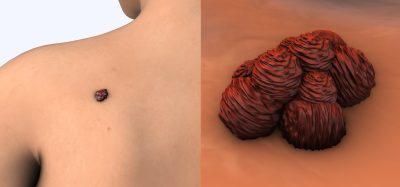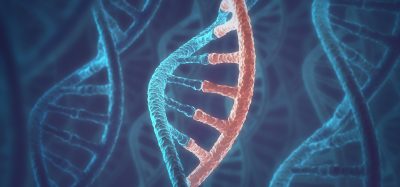Drug Discovery Article Competition Winner
Posted: 30 August 2023 | Dr Rosa Woldegebriel (Human Centric Drug Discovery) | No comments yet
We are thrilled to announce the winner of the Drug Target Review x ELRIG’s Article Competition: Dr Rosa Woldegebriel, Lead Scientist at the Human Centric Drug Discovery in Oxford, UK, whose article titled “Advancing Drug Discovery for Pain Disorders: Human iPSC-Based Approach” presents a revolutionary method in pharmaceutical research.
Addressing the limitations of animal models, Dr Woldegebriel’s work introduces a novel approach utilising human induced pluripotent stem cells (iPSCs) derived from real-world data and whole-genome sequencing for target validation, resulting in validated targets with human-specific safety and efficacy signals. This innovative strategy, combined with cutting-edge technologies and data-driven computational analyses, has the potential to reshape drug discovery for pain disorders and other neurological conditions, paving the way for more effective treatments.


Advancing drug discovery for pain disorders: human iPSC-based approach
Drug discovery relies on the use of relevant model systems. Most new targets have been discovered using animal models, which while useful, are not sufficiently predictive of human safety and efficacy. We have developed a unique approach for using human induced pluripotent stem cells for target validation from a list of targets from real-world data and whole-genome sequencing. This allows the discovery of validated targets with human safety and efficacy signals for a variety of disorders.
There is significant unmet medical need for effective treatment of neurological disorders, including pain disorders, which have a prevalence of 27.5 percent globally.6 Due to the complex clinical and biological nature of pain and the low translational predictivity of animal models in preclinical research, a more human relevant model is needed to increase understanding of the underlying pathology and to de-risk the development novel pain therapeutics. Therefore, to advance drug discovery in the field, screens on human cellular models such as such as specialised sensory neurons (nociceptors) are necessary. These models are based on induced pluripotent stem cells (iPSC) that can accurately recapitulate human pain in affected cell types and enable personalised medicine approaches.7
Real-world responses to drugs can be assessed using electronic health records (EHR) and used to identify how existing drugs affect patients.8 The recent revolution in genetic sequencing studies and availability of clinical records allows clinicians and scientists to focus efforts to study drug interactions, effectiveness of treatments, and identify new targets.9 Typically, in drug discovery, targets are narrowed down using cell models at the beginning of target discovery, whereas we start with human efficacy. We computationally identify which drugs have efficacy in the real world and targets linked to the disease in genome-wide studies. We can test their viability in the population, speeding up discovery and saving resources associated with laboratory target validation.9,10
We developed pharmacology and genetics screens for validating novel drug targets from a list of targets identified by electronic health records and genomics.9,11 For this, we differentiated patient and unaffected control iPSCs into nociceptors and characterised an SCN9A+/- and KCNK18+/- stem cell-derived nociceptor model of pain and migraine.1 To unravel the pain-associated phenotypes related to neuronal firing, we plated cells onto 48- well Axion Cytoview plates for multielectrode array (MEA).1 Targets were then further validated by combining testing the most promising drug candidates and knocking down specific targets using short interfering RNA (siRNA) and antisense oligonucleotides (ASOs).1
In this study, we successfully generated mature iPSC-derived dorsal root ganglion nociceptors from patients carrying SCN9A+/- or KCNK18+/- pathogenic variants.1 The differentiation process resulted in the expression of key pan-neuronal and sensory neuron markers, as confirmed by immunofluorescence and qRT-PCR analyses.1,2 This indicated that the generated nociceptors possessed the desired cellular phenotype, resembling human sensory neurons involved in pain perception.2-5
To further characterise the func5onality of these iPSC-derived nociceptors, we employed multielectrode array (MEA) recordings and live calcium imaging.2 The MEA recordings allowed us to assess the neuronal firing patterns of the nociceptors, while the calcium imaging provided insights into intracellular calcium dynamics, which play a critical role in neuronal excitability.2,3 Remarkably, the nociceptors exhibited a neuronal hyperexcitability phenotype, as evidenced by increased firing rates and elevated intracellular calcium levels.3,4
To investigate the potential of our cellular model for identifying novel drug targets, we performed pharmacological interventions on the hyper excitable nociceptors.4 The cells were incubated with various pharmacological compounds for one hour prior to experimentation.4 Interestingly, the hyperexcitability phenotype observed in the iPSC-derived nociceptors was effectively reversed acer pharmacological intervention.4 This suggests that our model system can be used to assess the efficacy of potential drug candidates in modulating pain related neuronal hyperexcitability.4
Furthermore, we employed a top-down approach to validate the identified drug targets.9,11 By combining the testing of promising drug candidates with the knockdown of predicted targets using short siRNA and ASOs, we were able to evaluate the functional consequences of target modulation in mature nociceptors.9,11 MEA recordings were performed before and acer drug treatment or target knockdown, and the resulting data were analysed using Axion’s Axis Navigator and Neural Metric Tool.9,11 This integrated approach allowed us to assess the impact of target modulation on neuronal firing patterns and further validate the selected drug targets.9,11
In conclusion, our study successfully generated mature iPSC-derived nociceptors from patients with SCN9A+/- or KCNK18+/- pathogenic variants.1,2 These nociceptors exhibited a hyperexcitability phenotype, which could be effectively reversed through pharmacological intervention.3,4 Our results highlight the potential of iPSC-derived nociceptors as a human relevant model system for studying pain disorders and evaluating the efficacy of potential drug candidates.1-5
Moving forward, there are several important directions to consider. Firstly, the further characterisation of the nociceptors using additional functional assays and molecular profiling techniques would provide a more comprehensive understanding of their properties and enable a more accurate recapitulation of the complex nature of pain.1-5 Additionally, expanding the model system to include assessment of contribution of other relevant cell types, such as astrocytes and microglia, would allow for investigation of their roles in pain processing and the evaluation of therapeutics targeting these cell types. 6,7
Moreover, the integration of advanced technologies, such as single-cell RNA sequencing and proteomics, would provide valuable insights into the molecular mechanisms underlying pain disorders and help identify potential biomarkers or novel targets. 11,12 Furthermore, the translation of our findings into personalised medicine approaches holds great promise. By utilising a large number of patient-specific iPSCs and incorporating individual genetic and clinical data, we can develop personalised pain models that can be used to identify patient specific therapeutic strategies.11
Overall, our study contributes to the development of human relevant model systems for studying pain disorders and validating drug targets.1-12 By combining information from electronic health records, genome-wide association studies and cellular pharmacology and genetic screens, we have demonstrated the potential of this approach for advancing drug discovery in the field of pain and other neurological disorders.1-12 Continued research in this area, with a focus on scalability and multiplexing of high-throughput technologies, will be crucial for accelerating the identification of reliable drug targets and the development of effective treatments for a variety of human disorders. 6,7,10,11
Author Bio:


Dr Rosa Woldegebriel is the Lead Scientist at the Human Centric Drug Discovery in Oxford, UK. Dr Woldegebriel has over 10 years of experience in biotech and academia-industry partnerships in identification of novel diseases and genes and uncovering mechanisms to treat them in complex in vitro models. Skilled in scientific, project and team leadership, state-of-the-art technologies including gene editing (CRISPR), stem cells, cellular differentiation and biology, proteomics, pharmacology and omics analyses.
References
- Pegngill P, Zeidler Z, Lee R, et al. Pharmacology and gene5cs screens reveal
nociceptor-specific defects of SCN9A and TRESK in human induced pluripotent stem
cell-derived sensory neurons. PAIN. 2019;160(9):1714-1726.
doi:10.1097/j.pain.0000000000001573 - Kupari J, Usoskin D, Parisien M, et al. Single cell transcriptomics reveals neurons
adjacent to spinal cord injury exhibit molecular signatures of neural repair and
inflamma5on. Cell Reports. 2020;32(1):107873. doi:10.1016/j.celrep.2020.107873 - Zeidler Z, Fraser K, Grol-Prokopczyk H, Zajacova A. A global study of pain prevalence
across 52 countries: examining the role of country-level contextual factors. PAIN.
2022;163(9):1740-1750. doi:10.1097/j.pain.0000000000002557 - Chiang MC, Lin YL, Shen W, et al. Modula5on of human ves5bular func5on by 5-HT3
receptor antagonist granisetron and its poten5al applica5on in ves5bular
schwannoma. Scien5fic Reports. 2020;10(1):1766. doi:10.1038/s41598-020-58745 - Hsiao HW, Liu WH, Wang CJ, et al. Topical but not systemic tranexamic acid prevents
postsurgical seroma forma5on in a rat model. Journal of the Formosan Medical
Associa5on. 2020;119(5):977-984. doi:10.1016/j.jfma.2020.02.019 - Interna5onal Associa5on for the Study of Pain. IASP global year against pain in the
most vulnerable. Accessed June 27, 2023. haps://www.iasp-pain.org/GlobalYear - Koob G, Volkow N. Neurobiology of addic5on: a neurocircuitry analysis. The Lancet
Psychiatry. 2016;3(8):760-773. doi:10.1016/S2215-0366(16)00104-8 - Shang Y, Hu L, Zhang Y, et al. Electrophysiological proper5es and synap5c func5on of
neurons derived from human induced pluripotent stem cells. Stem Cells and
Development. 2021;30(4):203-215. doi:10.1089/scd.2020.0068 - Segeritz CP, Rashid ST, de Brito MC, et al. HiPSC hepatocyte model demonstrates the
role of unfolded protein response and inflammatory networks in α1-an5trypsin
deficiency. Journal of Hepatology. 2018;69(4):851-860.
doi:10.1016/j.jhep.2018.05.014 - Ovchinnikov DA, Deng JM, Ogunrinu G, Behringer RR. Col2a1-directed expression of
Cre recombinase in differen5a5ng chondrocytes in transgenic mice. Genesis.
2000;26(2):145-146. doi:10.1002/(SICI)1526-968X(200002)26:2<145::AIDGENE14>
3.0.CO;2-# - Snyder BR, Chiu AM, Prockop DJ, Chan AW. Human mul5potent stromal cells (MSCs)
increase neurogenesis and decrease atrophy of the striatum in a transgenic mouse/ Dr. Rosa Woldegebriel model for Hun5ngton’s disease. PLoS ONE. 2010;5(2):e9347.
doi:10.1371/journal.pone.0009347 - Wang X, Willenbring H, Akkari Y, et al. Cell fusion is the principal source of bonemarrow-
derived hepatocytes. Nature. 2003;422(6934):897-901.
doi:10.1038/nature01531
Related topics
Drug Discovery, Drug Discovery Processes
Related organisations
Human Centric Drug Discovery
Related people
Dr Rosa Woldegebriel (Human Centric Drug Discovery)








